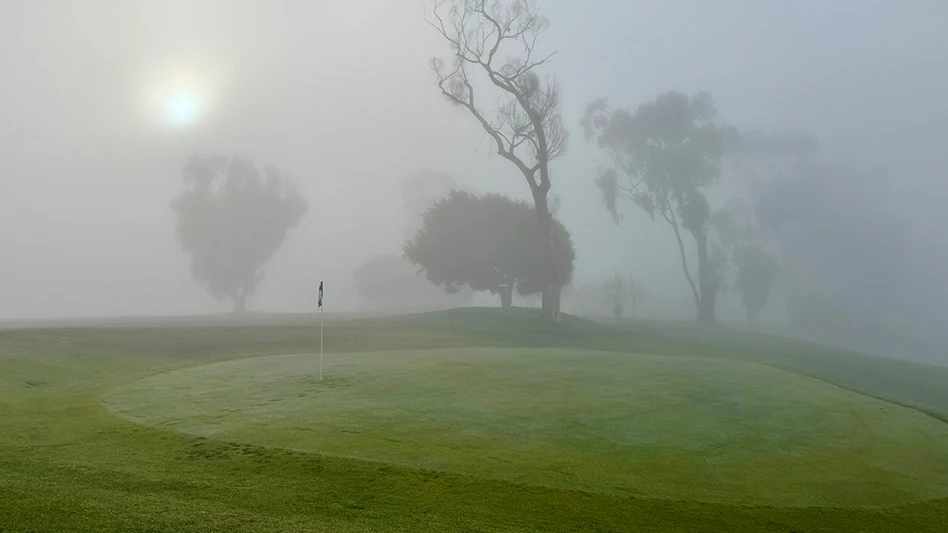 Jeffrey D. Brauer |
Like most others in the golf business, I’ve often joked there is no such thing as an “out-of-play area” on most public courses. Wherever you are, you will find a lost ball. In my previous discussions on fostering faster play, I noted “Provide wide play corridors” as a design component. I called out 50 yards as too narrow, 60 yards as the minimum and 70 yards as borderline for width, as far as keeping balls in play. I cited (from my experience) turf corridors of about 75-80 yards between the trees or native grasses bordering the landing zones to really speed up play. Just after submitting the column, it occurred to me that I wrote that based on my “intuitive” experience. Years ago, I actually spent a few days measuring where golfers really hit the ball. I know other architects have similarly studied such things over the years, but rarely shared data. I have largely based design recommendations on randomly seeing, playing and playing with other golfers on my own and other courses. I still have never seen truly comprehensive data on where shots land for average players, but there are a few studies which provide snippets of data we can use for design. One was a one-day study done by the USGA at a New Jersey public course. More recently, I found an article by Mark Broadie, a Columbia University professor, who has been in the news recently for his many studies of how pro golfers play. While those may not be relevant to designing courses for average players, back in 2008, he published “Assessing Golfer Performance Using Golfmetrics,” which included data on players in a pro-am, including a chart showing tee shot dispersion patterns of the 511 tee shots played by “D” level amateur (97-120 scores) players. As you would expect, higher handicap players generally (with exceptions!) had shorter and wilder tee shots. Keeping them in play generally keeps better golfers in play. The distance and direction results he found are repeated in the tables shown. I went through the exercise of counting the charts’ dots to see how much room it would take to keep all tee shots in play. My measurements are approximations and the standard disclaimer that “your results may vary” apply, but I found that containing all shots within play isn’t possible. Even for the better players, a few shots ended up 100 yards or more off line.
As can be seen, my intuitive 60–70–80 yard assumption was a bit skinnier than statistics suggest for true “hit it, find it, and hit it again” golf. Most of you are mentally going over your course, and saying, “No way are we that wide!” If you work at a busy municipal course, you might add, “But we should be!” Attaining even an average of one tee shot every other hole might be difficult for most courses. Fortunately, many courses can be narrower, as the chart focuses on 97–120 shooters, which make up about a sixth of USGA handicaps. With a typical cross section of golfers, you will probably contain a slightly higher percentage of shots in play. Courses catering to better golfers might be even narrower. As much as I would love to offer a “one size fits all” solution, every hole is unique in its balance of water use, customers, budgets, sprinkler patterns, topography, wind, elevation change, hazards, safety and other factors. A carefully considered turf area plan — in connection with a golf course architect — will produce the best result.
Jeffrey D. Brauer is a veteran golf course architect responsible for more than 50 new courses and more than 100 renovations. A member and past president of the American Society of Golf Course Architects, he is president of Jeffrey D. Brauer/GolfScapes in Arlington, Texas. Reach him at jeff@jeffreydbrauer.com. |

Explore the October 2014 Issue
Check out more from this issue and find your next story to read.
Latest from Golf Course Industry
- Talking Turf Weeds 13: Talking seasonal change with Heidi Burgess and Paul Marquardt
- Beyond the Page 65: New faces on the back page
- From the publisher’s pen: New? No way!
- Indiana course upgrades range with synthetic ‘bunkers’
- Monterey Peninsula CC Shore Course renovation almost finished
- KemperSports and Touchstone Golf announce partnership
- PBI-Gordon Company hires marketing manager Jared Hoyle
- Mountain Sky Guest Ranch announces bunker enhancement project






